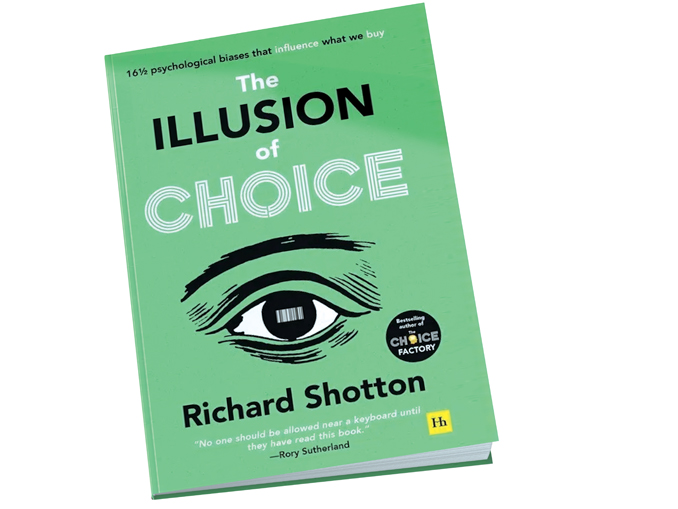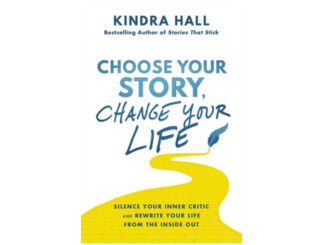Reviewed by Oana Popa Rengle, Founder, Anamnesis, Bucharest, Romania, oana@anamnesis.ro
Richard Shotton is a British marketer with 22 years of practical experience specializing in applying behavioral science to marketing. The Illusion of Choice is Shotton’s second book. His first book, The Choice Factory, was a multi-award-winning, Amazon #1 bestseller. So, you can imagine why I was excited to read his second book as soon as I could get my hands on it.
The Illusion of Choice feels like a continuation of Shotton’s first book in more than one way: from adding 16 more cognitive biases that influence buyers’ behavior to the list of 25 started in The Choice Factory to the fast pace and easy writing style, and even the creative aspect of starting each chapter with an excerpt from a regular person’s life that illustrates the respective bias. However, if you haven’t read The Choice Factory, don’t worry; you can read The Illusion of Choice on its own.
Shotton’s major added value to the vast body of behavioral science books is his real-world experience and laser focus on the practical applications of these principles to communication, pricing, and habit formation. Because of that, the book reads a lot like a highly engaging workbook.
It features 16 (and a half—I will get back to this) chapters, each exploring one bias. The chapters start by providing evidence (academic or commercial studies) and follow up with a “How to apply this bias?” section, featuring application suggestions (all numbered, workbook-style), including lateral applications (less obvious, even counterintuitive sometimes) and examples from practice. This is why this book is best read with the purpose of a practical application in mind (having a problem to solve, question to answer, or project to execute) rather than just casually learning more about behavioral science.
In fact, this book is so full of tips and examples, cascading one chapter after another, that in the end, you might feel them slipping through your fingers unless you can pin them somewhere (write them down, create your own framework, or simply practice applying the learnings to a problem at hand).
In researching this book, Shotton dug up a lot of new research, mostly academic. While some experiments might raise the occasional eyebrow due to seemingly small(er) samples, overall, he makes a compelling case for each bias, citing multiple sources, both old and new studies, including a few of his own experiments (with a diligent list of references at the end of each chapter for those who want more reassurance).
Shotton, a master of applied behavioral science, applies his own teachings to the very writing of this book. I’m sure you’re wondering why the book features (and is titled) 16½ biases instead of just 16 or 17. Well, Chapter 6½ clarifies it: it’s the precision bias—precise numbers are distinctive. He cites an experiment where researchers dressed as panhandlers asked people for money either in a standard way (a quarter or loose change) or in a weirdly precise way (17 cents or 35 cents). In the second case, people were 60 percent more likely to give money. So, as most books use round numbers, why not have a title that disrupts and also implies a higher accuracy (the chapter goes on to show how people implicitly associate specificity with accuracy, too).
As another example, Chapter 4, The Generation Effect (basically about how demanding some cognitive effort from the audience makes your information stickier), introduces the power of questions—placing questions in your copy can boost not just memorability, but persuasiveness, too (by allowing the audience to feel more in control). Needless to say, the subtitles of this book feature many question marks. My immediate takeaway idea is that titles or subtitles formulated as questions can work great for (research) reports, too.
If you are interested in also reading the VIEWS book review of The Choice Factory, you can find it here: www.qrcaviews.org/2020/01/29/the-choice-factory





